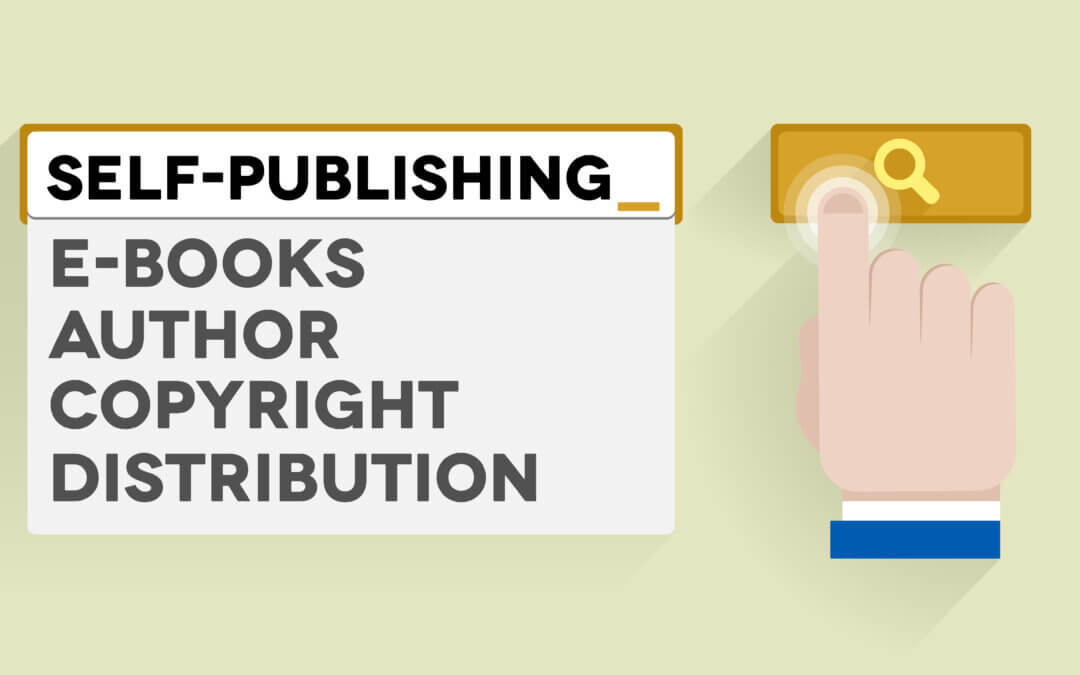Where Do Indie Authors Stand with Their Treasured Manuscripts?
Keywords: Copyright, Digital Rights Management (DRM), eBook publishing, Kindle Digital Publishing (KDP)
The publishing world has just become less secure for independent (Indie) publishers. It has been six years since I picked up my writer’s pen and explored self-publishing. Although I write fiction, my concern is with the academic arena or non-fiction marketplace. With over ten books now penned under my name, I felt satisfied with my output. While I have published with Elsevier in the past and presently have a contract with another publishing house, self-publishing brings the art of formatting and creating your own book to another skill level. Well, you can imagine my dismay at finding one of my top books being cloned.

Today scamming has become a professional art, with people being taken for a ride and providing access to their bank accounts. The work of fraud and now plagiarism is shaping the writer’s world. I am not talking about the usual copying from books that Universities now use software to monitor against fraud, nor am I discussing artificially intelligent (AI) writing per se. In the world of eBooks, we find that writers use pseudonyms and alter the title and cover but then import the original content.
 Current Views
Current Views
Locklizard is a DRM security site and says –
‘… though it doesn’t hit the headlines nearly as often, eBook piracy is a large problem that cuts into the revenue of publishers and the royalties of hard-working authors when selling eBooks online.’
Reedsy co-Founder Ricardo Fayet Ricardo Fayet, @ Reedsy and author of How to Market a Book: Overperform in a Crowded Market, says,
‘Yes, it’s something that unfortunately happens pretty often. You can report these books for copyright infringement to Amazon and they will take them down, but others may pop up. It is a problem that Amazon should put more resources into solving.’
When is a book on Morton’s Neuroma not written by a podiatrist?
I investigated further and contacted Amazon, a printer and distributor of EBooks and printed books. They have a big investment in authors and earn plenty of money by working with authors. Now let’s be clear at this point. Amazon doesn’t condone cloning work and will take it down as they did when I wrote to them. However, the system is pretty heavy duty requiring a form for each false publication. I managed a few and then curiously found new ones sprouting up like the severed head of the Hydra!
Here’s my book Morton’s Neuroma, with a healthy 55 ratings at the time of writing.

This book is available from Amazon Books in eBook and paperback format.
AMAZON REPLY
I decided to buy Raymon Darenbourg’s copy of my book as it was important to see whether the content was only the look inside the material or the whole book. It was the whole book! I posted a reader comment with a one-star rating, but this was turned down. Here was their response back to me in double quick time.
| Thank you for submitting a customer review.
Thank you for submitting a customer review on Amazon. After carefully reviewing your submission, your review could not be posted to the website. It appears your review had feedback on the seller. While we appreciate your time and comments, reviews must adhere to the following guidelines. |
||
|
Of course, AMAZON is a massive company with numerous departments. As a regular author, Amazon is good at getting back to me these days, so there is no fault there. I wanted to make the point that the formatting of these clones was appalling and an insult, let alone criminal. Alisha Tinney (whoever she is?) published the cover shown below. Incidentally, the name has almost certainly been computer-generated, so AI does come into the story after all.
A Podiatrist doing necks?!

Amazon Kindle Digital Publishing and eBook on ‘neuromas’ show an example of a pirated eBook.
Here are a couple of giveaways. The neuroma I was talking about affects feet. The content is about ‘feet’, yet the picture shows a man holding his neck. Under the picture, the book says, ‘A Guide from A Podiatric Doctor.’
| Paul Carnalla | ISBN 9798795662305 | What you should know about neuroma. A Guide from a podiatric doctor |
| Alisha Tinney (illustrated) | ASIN B09PNL49GK | What you should know about neuroma. A Guide from a podiatric doctor |
| Marx Krakowsky | ISBN 979875652986 | What it is and how to stop the pain. |
| Avaro Gunether | ASIN B09PNJGJJJ | Mortons Neuroma: what is it and how to stop the pain |
| Aden Patane | NA | (came up but disappeared) |
| Raymon Darensbourg
(Illustrated) |
ASIN B09PNKWYQT
|
Your Guide to Morton’s Neuroma: Dealing with a Morton’s Neuroma. |
The curious matter is that all these books are clustered around early 2022, five years after my publication. The second fact that has not affected other books is that Amazon formatted the book and eBook when I joined their scheme while I formatted the remaining books. Amazon KDP, of course, is cautious not to overreact as they make the case that titles bearing similarity are fair game and cover designs can be different. One can certainly understand that title and cover don’t fall under the criteria of being illegal. However, that assumes the pirate copier has licensed the cover, in which case this, too, is a crime. The content has been rearranged in a couple of cases but has failed to remove damning evidence that the source comes from somewhere else. The content, badly formatted by the pirate, is all mine, with names of colleagues and stories of my patients, drawings that I created and some licensed to me. I found a few others, some of which Amazon took down.
Does Amazon not care?
I cannot say this as a fact, but shall we say they allow books to be published, or should I say covers with no content, which has been going on for years? An article titled ‘Wave of Pirated eBooks may hit Kindle Profits’ was published in January 2012. The article is chilling as Hi Tech suggest that 20% of eBooks are pirated. In the USA and UK, it is illegal to distribute copyrighted material, and there are severe penalties, but you have to catch the perpetrators of this heinous crime. Is Amazon, by default supporting this crime? No, they are not, but the software must be invested to check sources and origins, and in this, they appear to be failing. There is no shortage of sites that discuss piracy, protection and copy protection, but what can we do about it?
To experience some of the anger felt by Amazon writers, Amazon’s KDP community forum suggests a body of concern, but the posts date back to 2015 rather than currently. Many sources confirm that Copyright iis automatic, but this does not protect the original author who has worked hard to produce a body of work through their own skill, experience and effort.
Where can you download eBooks illegally?
‘While you can print or copy a few pages from most eBooks, the total number is limited. Book-sharing platforms like 4shared.com may appear innocent at first glance. Still, this site is the most popular among consumers looking to illegally download e-books, with Uploaded.net and Bookos.org ranking second and third as the most used websites for this purpose. 22 Mar 2021’ (source not cited). In a quote from an article in The Guardian by Katy Guest ( a leading UK newspaper), one can gauge a sense of helplessness. The article was about how easy it is for people to access pirated work by authors.
‘One of these is the Waterstones children’s books prize winner Michelle Harrison, who has drawn attention to the issue on Twitter. “I feel pretty despondent about it all,” she says now, having been called “elitist” and “not worthy of being an author” by angry pirates when she pointed out that they were stealing her work. “It’s all very well publishers sending take-down notices, but we all knew it was only a matter of time before the site sprang up again under a different guise. It’s fighting something we can’t win.’
Watermarking and Digital Rights Management
Some sites tell you how to protect your work. Fortinet and Kitaboo, for example, discuss DRMs, or Digital Rights Management methods that use encryption. Locklizard has produced an article about DRM management that discusses Amazon and its policies.
‘Kindle DRM has been a large target for pirates since its release in 2007 and as a result there are various free and user-friendly tools available to strip its DRM, such as Epubor and Calibre plugin DeDRM.’ Social watermarking accessed 5/6/23
Speaking to the Director of Sales for Vitrium, Adam Shailer clarified the whole business. Within moments, it was clear that small users like myself could not afford DRM and its multifaceted products designed for the high-end market, large associations and enterprises covering education and training as examples of their target audience. Sophisticated encryption and development of these products mean that costs must be recouped, and an annual fee starting at £4200.00 for 500 users with 10GB storage is beyond the indie author’s needs. While watermarking is attractive, it can also be affected by pirate software, and most companies would recommend a belts and braces approach, which comes back to the sophisticated products at the high end of the spectrum.
Removing DRM isn’t illegal, but distributing copyrighted material usually is. Amazon can remove E-Books that have signed up to KDP Select and are found on other sites because pirates are cloning their work.
‘With a Kindle, there is pretty much no protection against pirated books. There are programs which can simply convert any piece of text into the proper format, and it will show on your Kindle as if you had bought it!” one of the pirate websites said.’ 2 Jan 2023
At this point, I contacted Amazon and Nico responded from KDP – ‘Regarding your question, let me explain first of all is one time decision, you cannot change it once have been taken. Meaning that if you have ebooks published and, you would like to have DRM, you will need to unpublish that title, and from scratch publish it again with the DRM option. In KDP is something you have choose on the Title Set-Up, once you finish the ebook Details Set-Up, go to ebook Content Set-Up and, you will be able to find a check box within next description: “Add digital rights management (DRM) on this Kindle eBook. DRM is intended to inhibit unauthorized distribution of the Kindle file. Learn more”
It is clear, or at least to those that use KDP professionally that you can add a DRM, but each time you try to edit or alter the manuscript, you must go back to square one. I might update a manuscript half a dozen times and then some after release if I find errors. DRM selection would be extremely time-consuming therefore making it protected a disincentive. Clearly, my research has left me with few choices, as with others in the world of small indie production.
While the UK Government has clear guidelines on copyright, the application to eBooks remains a minefield for small authors. DRM can be purchased, but this adds cost in a marketplace where income growth is often slow, and author pockets are not deep. While Locklizard looks attractive, you need a business email address to start with, and of course, not only does this have to be purchased, but an annual fee is usually required. For the indie publisher today, the market is no longer inexpensive when you consider that you need to pay for editorship, cover designs and maybe an ISBN. Amazon is still attractive and keeps costs down, but there are risks when publishing eBooks.
Thanks for reading ‘The Unsecure World of EBooks’ by David R Tollafield
5 June 2023
Published by Busypencilcase Communications (Est. 2015)


This is astonishing.
So unfair and it appears there is little interest in stopping it.
Since releasing this article, I have added a small addition to the post as I try to put Amazon’s involvement into perspective covering DRM. The encryption required can affect the genuine readers’ desire to download or view a sample. While paperbacks are better protected, eBooks remain convoluted because of our complex digital world. In brief, of course, it is unfair.